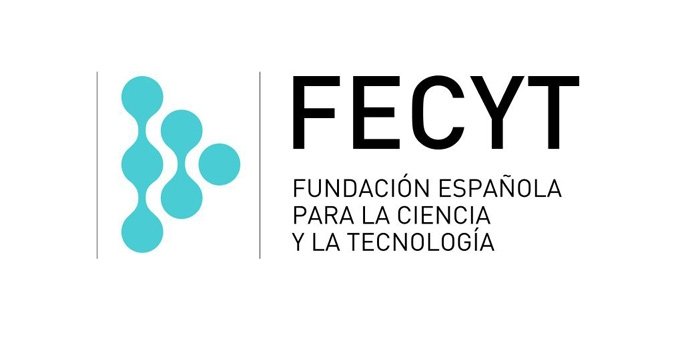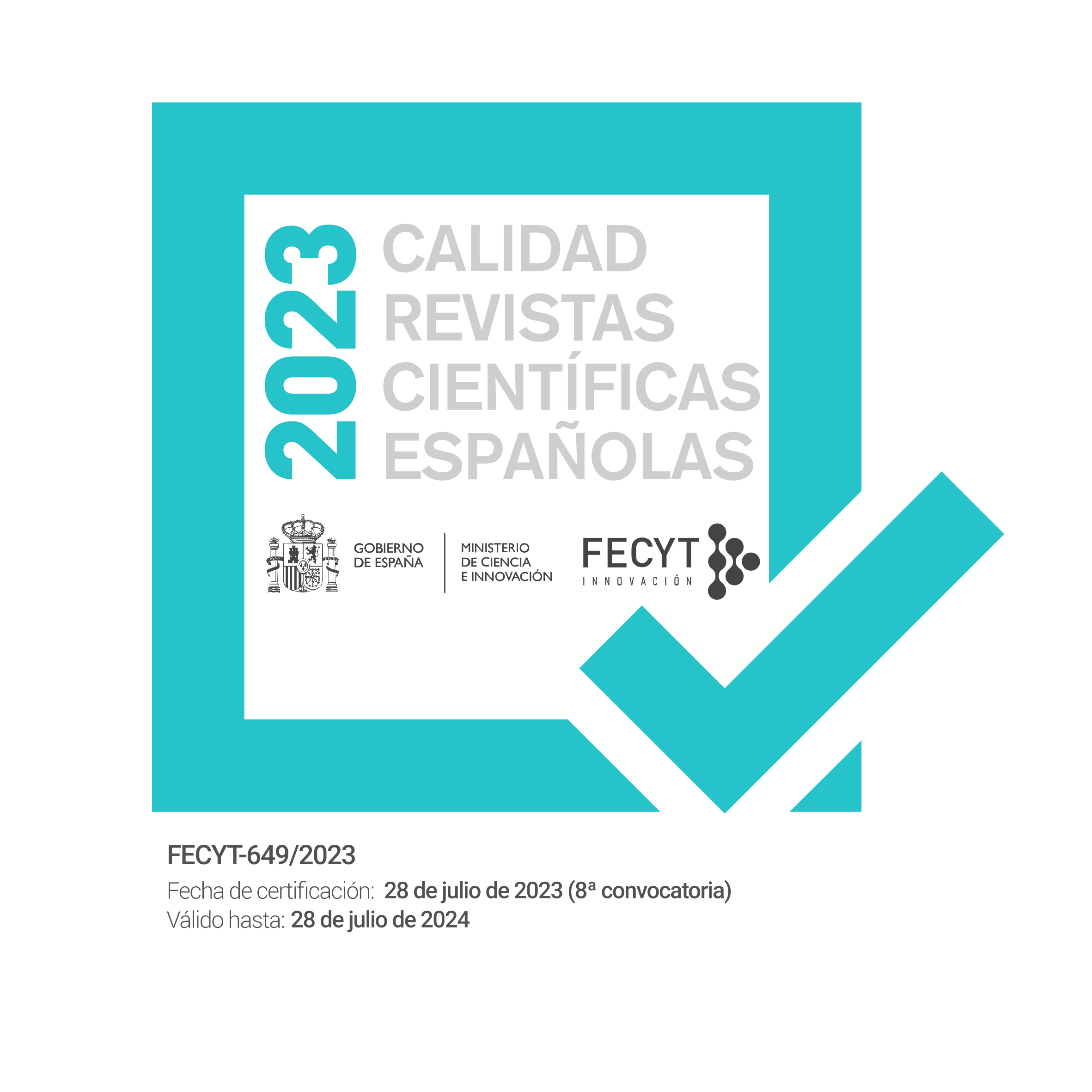¿Está justificada la mala imagen de la administración de justicia española? ¿es un problema de inversión?: una comparativa europea mediante el análisis DEA
Resumen
La justicia es un bien público y, en consecuencia, en el seno de la Administración Pública, el correcto funcionamiento de la Administración de Justicia tiene capital importancia para una sociedad. En la actualidad, el sistema judicial español es objeto de severas críticas, que lo califican de ineficiente y tardío. Un gran sector social y profesional de la Administración de Justicia considera que la falta de medios es la causa de su mal funcionamiento, y reclaman mayor inversión. En este trabajo analizamos si ambas aseveraciones son acertadas: si es ineficiente la Administración de Justicia española y si un mayor gasto conllevaría a la mejora de este servicio público. Aplicando la metodología de Análisis Envolvente de Datos (DEA), determinamos la eficiencia de la Administración de Justicia española en relación con otras Administraciones de Justicia europeas y, mediante el análisis tobit, relacionamos las puntuaciones DEA y el gasto público. Nuestros resultados concluyen que un mayor esfuerzo en el gasto conllevará a una mejor posición.
ABSTRACT
Justice is a public good. Therefore, within the core of the Public Administration, the proper functioning of the Judicial Administration is of utmost importance to society. Currently, the Spanish Judicial System is being subject to sharp criticism that qualifies it as inefficient and belated. A large social and professional sector of the Judicial Administration considers that the lack of means is the reason behind its poor functioning and so, they demand greater investment. Throughout this paper the accuracy of both assertions will be analysed: whether the Spanish Judicial Administration is inefficient and whether a greater expenditure would lead to the improvement of such public service. By applying the Data Envelopment Analysis (DEA) methodology, the efficiency of the Spanish Judicial Administration is determined and compared to that of other European Judicial Administrations. Through the Tobit analysis, the DEA levels are related to the public spending. Our outcomes show that a greater expenditure effort will result into a better ranking position.
Descargas
Referencias
Akbarian, D. (2015): “Ranking All DEA-Efficient DMUs Based on Cross Efficiency” Journal of Optimization, Article ID 594727, 10 pages.
Adler, N., Friedman, L. y Sinuany-Stern, Z. (2002): “Review of ranking methods in the data envelopment analysis context”, European Journal of Operational Research, 140(2), 249–265.
Albers, P. (2003): “Evaluating Judicial Systems: ‘A Balance between variety and generalization”, European Commission for the Efficiency of Justice ( CEPEJ ), Councils for the Judiciary in EU Countries.
Ballbé, M. y Padrós, C. (1997): Estado competitivo y armonización europea, Ariel, Barcelona.
Banker R.D., Charnes, A. y Cooper, W. (1984): “Some Models for Estimating Technical and Scale Inefficiencies in Data Envelopment Analysis”, Management Science, 30(9), 1078-1092.
Banker, R. D. y Thrall, R. M. (1992): “Estimation of Returns to Scale Using Data Envelopment Analysis”, European Journal of Operational Research, 62(1), 74–84.
Barómetros de opinión. Centro de Estudios de Investigaciones Sociológicas. http://www.cis.es/cis/export/sites/default/-Archivos/Indicadores/documentos_html/TresProblemas.html.
CEPEJ (European Commission for the Efficiency of Justice) (2012): European judicial systems: Efficiency and quality of justice, 2010 data. Council of Europe Publishing, Strasbourg.
Charnes, A., Cooper, W.W. y Rhodes, E. (1978): “Measuring the efficiency of decision making units”, European Journal Operational Research, 2(6), 429–444.
Círculo de Empresarios. (2003): Justicia, Economía y Empresa, Documentos Círculo.
Coelli, T. et al. (2005): An Introduction to efficiency and productivity analysis, Springer.
Council Of Europe. Committee Of Ministers. Resolution Res (2002)12. Disponible en http://www.coe. /dghl/cooperation/cepej/presentation/cepej_en.asp
Cross, F. B. y Donelson, D. C. (2010): “Creating Quality Courts”, Journal of Empirical Legal Studies, 7 (3), 490-510.
Deynely, F. (2012): “Analysis of relationship between efficiency of justice services and salaries of judges with two-stage DEA method”, European Journal of Law and Economics, 34, 477-493.
El-Mahgary, S., Rönnholm, P., Hyyppä, H., Haggrén, H. y Koponen, J. (2014): “Evaluating the performance of university course units using data envelopment analysis”, Cogent Economics & Finance, 2: 918856.
Fabbri, D. (2010): “Law Enforcement and Firm Financing: Theory and Evidence”, Journal of the European Economic Association, 8, (4), 776-816.
Farrell, M. J. (1957):” The measurement of productive efficiency”, Journal of the Royal Statistical Society Series A, 120, 253-281.
Finocchiaro, M. y Guccio, C. (2014): “Searching for the source of technical inefficiency in Italian judicial districts: an empirical investigation”, European Journal of Law and Economics, 38 (3) 369-391.
Ganley, J.A. y Cubbin, J.S. (1992): Public Sector Efficiency Measurement: Applications of Data Envelopment Analysis, Elsevier, North-Holland.
García Posada, M. y Mora Sanguinetti, J.S. (2013): “Firm Size and Judicial Efficacy: Evidence for the New Civil Procedures in Spain”, Documento de Trabajo 1303, Banco de España, Eurosistema.
García Rubio, M.A. y Rosales López, V. (2010): “Justicia y Economía: Evaluando la Eficiencia Judicial en Andalucía”, Indret.
Hayo, B. y S. Voigt, S. (2014): “The Relevance of Judicial Procedure for Economic Growth”, CESifo Economic Studies, 60, (3), 490-524.
Iglesias, P. y Arias, X.C. (2006): “Transaction Costs and Efficiency of the Spanish Judicial System”, ISLE Conference, Roma.
Ippoliti, R., Melcarne, A. y Ramello, G. B. (2015): “The Impact of Judicial Efficiency on Entrepreneurial Action: A European Perspective”, Economic Notes, 44, 57–74.
Jimeno, J.F., Martínez-Matute, M. y Mora Sanguinetti, J.S. (2015): “Employment protection legislation and labor court activity in Spain”, Banco de España. Documentos de Trabajo, N.º 1507
Kittelsen, S. y Førsund, F. R, (1992): “Efficiency analysis of Norwegian district courts”,Journal of Productivity Analysis, 3, 3, 277-306.
Ley, E. (1991): “Eficiencia productiva: Un estudio aplicado al sector hospitalario”, Investigaciones Económicas, 15 (1), 71-88.
Liu, J.S., Lu, L., Wen-MinLu y Lin, B.
(a)(2013): “Data envelopment analysis 1978–2010: A citation-based literature survey”, Omega, 41, 3-15.
(b)(2013): “A survey of DEA applications”, Omega, 41, 893-902.
Mar Molinero, C. y Woracker, D. (1996): “Data Envelopment Analysis: - a non-mathematical introduction”, OR Insight 9 (4).
Ménard C. y Du Marais, B. (2008): “Can we rank legal systems according to their economic efficiency?”, Washington University Journal of Law & Policy: Law & The New Institutional Economics, 26, 55- 80.
Mora-Sanguinetti, J. S. (2016): “Evidencia reciente sobre los efectos económicos del funcionamiento de la justicia en España”, Boletín Económico-Banco de España, 1, 33-41.
Mora-Sanguinetti, J.S., Martínez-Matute, M. y M. García-Posada (2016). “Credit, crisis and contract enforcement: evidence for the Spanish loan market”, Working Papers, 1630. Banco de España.
Nazarko, J. y Šaparauskas, J. (2014): “Application of DEA method in efficiency evaluation of public higher education institutions”, Technological and Economic Development of Economy, 20(1), 25-44.
Nieto, A. (2005): El desgobierno judicial, Fundación Alfonso Martín Escudero, Editorial Trotta. Madrid.
Padilla, J., Llorens, V., Pereiras, S. y N. Watson. (2007): “Eficiencia judicial y eficiencia económica: el mercado crediticio español”, en La Administración Pública que España necesita, Libro Marrón, Círculo de Empresarios, Madrid.
Palečková, I. (2015): “Estimation of banking efficiency determinants in the Czech Republic”, Journal of Applied Economic Sciences, 10(2), 234–242.
Palumbo, G., Guipponi, G., Nunziana, L. y Mora Sanguinetti, J.S. (2013): “The Economics of Civil Justice: New Cross-country Data and Empirics”, OECD Economics Department Working Papers, No. 1060, OECD Publishing. http://dx.doi.org/10.1787/5k41w04ds6kf-en.
Pastor Prieto, S. (1989): Sistema Jurídico y Economía. Una introducción al Análisis Económico del Derecho, Ed. Tecnos.
Pastor Prieto, S.
(a) (2003): “Dilación, eficiencia y costes”, Foro sobre la Reforma y Gestión de la Justicia, Fundación BBVA, Bilbao.
(b) (2016): Análisis Económico de la Justicia y Reforma Judicial, Editorial Tirant lo Blanch.
Pastor Prieto, S. y Rosales, V. (2005): “Dos dimensiones de la eficacia de la justicia”, Economistas, 105.
Pedraja, F. y Salinas, J. (1995): “La eficiencia en la Administración de Justicia: Las Salas de lo contencioso de los Tribunales Superiores de Justicia”, Revista de Economía Aplicada, 8, (III), 163-195.
Peyrache A. y Zago, A. (2016): “Large courts, small justice! The inefficiency and the optimal structure of the Italian justice sector”, Omega, 64, 42-56.
Rosales López, V. (2008): “Economics of court performance: an empirical analysis”, European Journal of Law and Economics, 25, 231-251.
Santos, S.P. y Amado, C.A.F. (2014): “On the need for reform of the Portuguese judicial system – Does Data Envelopment Analysis assessment support it?”, Omega, 47, 1-16.
Schuschny, A. (2007): Método DEA y su aplicación al estudio del sector energético y las emisiones de CO2 en América Latina y el Caribe, CEPAL Serie estudios estadísticos prospectivos.
Sufian, F. (2011): “Benchmarking the efficiency of the Korean banking sector: a DEA approach”, Benchmarking: An International Journal, 18 (1), 107-127.
Tobin J. (1958): “Estimation of relationships for limited dependent variables”, Econometrica, 26, 24-36.
Tulkens, H. (1993): “On FDH efficiency analysis: Some methodological issues and applications to retail banking, courts, and urban transit”, Journal of Productivity Analysis, 4, (1), 183-210.
Veiderpass, A. y McKelvey, M. (2014): “Evaluating the performance of higher education institutions in Europe: A non-parametric efficiency analysis of 944 institutions”, Efficiency in Education. Workshop 19th – 20th September 2014 at The Work Foundation, London, U.K., 9.
Vincová, K. (2005): “Using dea models to measure efficiency”, Technical University Košice, Biatec, XXIII, 8.
Voigt, S. y El Bialy, N. (2012): “Identifying the Determinants of Judicial Performance: Taxpayers’Money Well Spent?", Working Paper disponible en: http://papers.ssrn.com/sol3/papers.cfm?abstract_id=2241224.
Voigt, S. (2016): “Determinants of Judicial Efficiency: A Survey”, European Journal of Law and Economics, DOI 10.1007/s10657-016-9531-6.
Descargas
Publicado
Número
Sección
Licencia
- Los autores/as conservarán sus derechos de autor y garantizarán a la revista el derecho de primera publicación de su obra, el cuál estará simultáneamente sujeto a la Licencia de reconocimiento de Creative Commons que permite a terceros compartir la obra siempre que se indique su autor y su primera publicación esta revista.
- Los autores/as podrán adoptar otros acuerdos de licencia no exclusiva de distribución de la versión de la obra publicada (p. ej.: depositarla en un archivo telemático institucional o publicarla en un volumen monográfico) siempre que se indique la publicación inicial en esta revista.
- Se permite y recomienda a los autores/as difundir su obra a través de Internet (p. ej.: en archivos telemáticos institucionales o en su página web) antes y durante el proceso de envío, lo cual puede producir intercambios interesantes y aumentar las citas de la obra publicada. (Véase El efecto del acceso abierto).
La Revista de Estudios Empresariales. Segunda Época, utiliza PKP Preservation Network (PN).




























